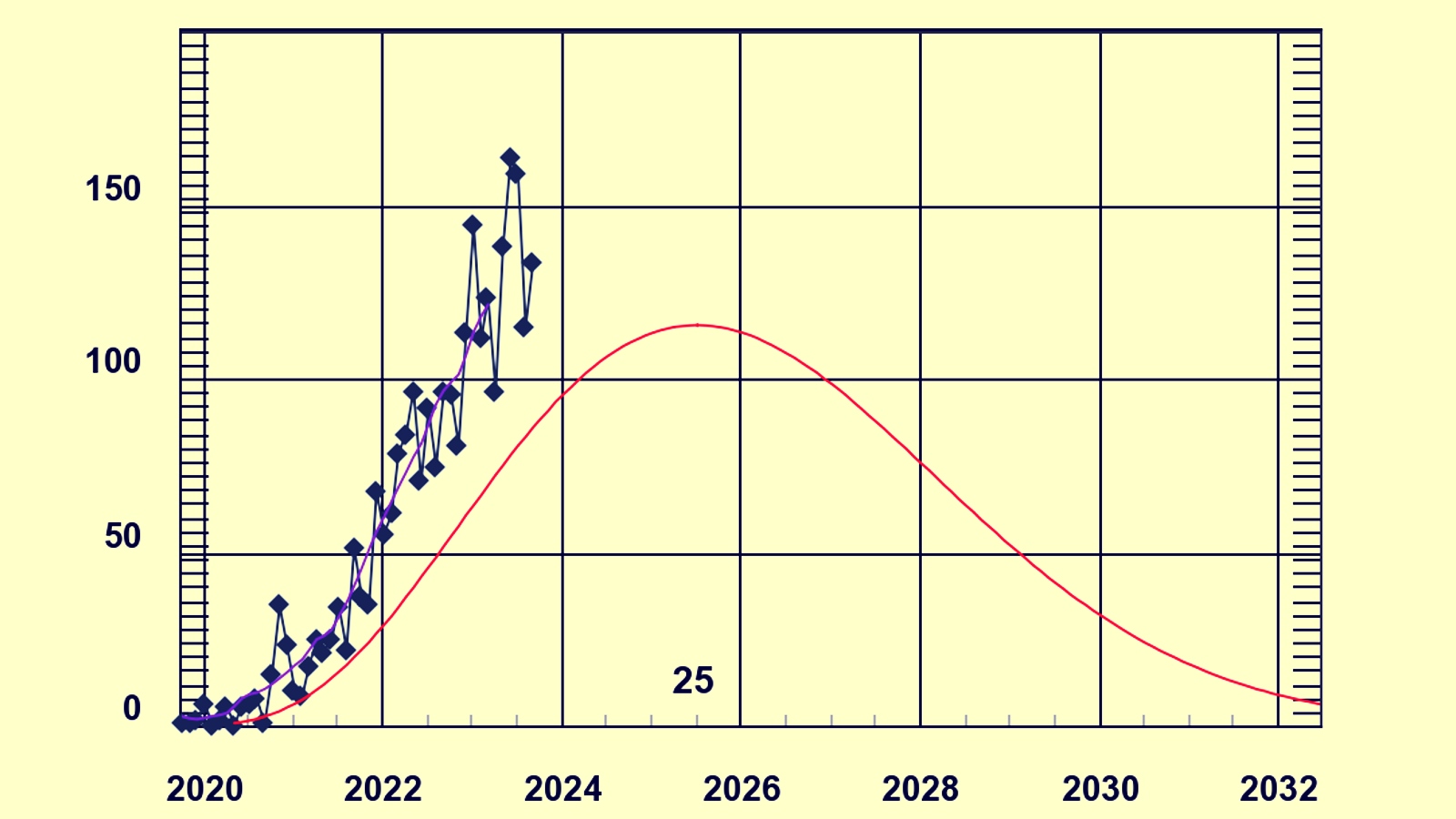Scientists finally acknowledge that they got their solar cycle predictions wrong, and that we are fast approaching the sun's explosive peak
NOAA's Space Weather Prediction Center has released a "revised prediction" for the current solar cycle, which states that the upcoming solar maximum will arrive sooner and be more explosive than they initially forecast — as Live Science previously reported.

Scientists forecasting solar weather have finally acknowledged that the initial predictions for the current solar cycle were way off. The researchers now say that we are fast approaching an explosive peak in solar activity. Earlier this year, Live Science reported that the solar maximum will likely hit harder and sooner than predicted.
The sun is constantly in flux. Roughly every 11 years, our home star cycles from a period of tranquility, known as solar minimum, to a peak of solar activity known as solar maximum — when dark sunspots cover the sun and frequently spit out powerful solar storms. The star then transitions back to solar minimum before the next solar cycle begins.
The sun's current cycle, Solar Cycle 25, officially began in early 2019. At the time, an expert panel that was commissioned by the National Atmospheric and Oceanic Administration's (NOAA), NASA and the International Space Environment Services (ISES), predicted that Solar Cycle 25 would most likely peak at some point in 2025 and be underwhelming compared with average cycles, much like its predecessor, Solar Cycle 24.
However, other solar scientists soon realized that the sun was not following the prediction panel's forecast. And in June this year, Live Science revealed that solar activity had been ramping up quicker than expected and talked with several experts who predicted that the solar maximum would likely arrive before the end of 2024.
On Oct. 25, NOAA's Space Weather Prediction Center (SWPC) issued a "revised prediction" for Solar Cycle 25 and acknowledged that the 2019 prediction panel's initial estimations were "no longer reliable enough for SWPC's customers," such as private space exploration and satellite companies. The new update states that "solar activity will increase more quickly and peak at a higher level" than initially predicted and that solar maximum will likely begin between January and October next year.
Related: 15 dazzling images of the sun

Several signs this year revealed that the solar maximum is going to arrive sooner and be more active than expected, including a 20-year sunspot peak, massive X-class solar flares, extensive aurora displays at lower latitudes and rising temperatures in the upper atmosphere, as well as the appearance of streaks of light, known as airglow, and the disappearance of noctilucent, or night-shining, clouds.
Sign up for the Live Science daily newsletter now
Get the world’s most fascinating discoveries delivered straight to your inbox.
It is unclear why the prediction panel's forecast was wrong or why an updated prediction was not released sooner, despite warning signs coming for years. For instance, in 2020, a group of scientists led by Scott McIntosh, a solar physicist and deputy director of the National Center for Atmospheric Research in Colorado, used historic sunspot and magnetic field data to predict the solar maximum would be more active and arrive sooner than expected.
A more active peak in solar activity could create disruptions on Earth: If large solar storms smash into our planet they can cause radio blackouts, damage power infrastructure, irradiate airline passengers and astronauts and knock out GPS and internet satellites —some of which could actually fall from the sky.

A more active solar maximum therefore poses a "larger hazard for these critical technologies and services," NOAA representatives wrote in their updated forecast.
Related: 10 solar storms that blew us away in 2022
Wildlife experts have also warned that a more active solar maximum could disorient animals that rely on Earth's magnetic field to navigate, such as large whales and migrating birds.
To prevent further confusion for the remainder of Solar Cycle 25, SWPC will now shift to a more flexible forecast system for the first time in its history, which will be updated at the start of every month.
"We expect that our new experimental forecast will be much more accurate than the 2019 panel prediction and, unlike previous solar cycle predictions, it will be continuously updated on a monthly basis as new sunspot observations become available," Mark Miesch, a solar physicist at the Cooperative Institute for Research in Environmental Sciences at the University of Colorado Boulder and lead researcher at SWPC, said in the statement. "It's a pretty significant change."
Editor's Note: This story was updated at 11:50 a.m. ET on Wednesday, Nov. 1 to clarify that NASA, NOAA and ISES commissioned the 2019 prediction panel rather than the panel being made up of SWPC scientists, and to correct an error in the caption for Figure 2, which shows sunspot numbers, rather than the number of individual sunspots. The story was also updated to clarify how the 11-year solar cycle is measured.

Harry is a U.K.-based senior staff writer at Live Science. He studied marine biology at the University of Exeter before training to become a journalist. He covers a wide range of topics including space exploration, planetary science, space weather, climate change, animal behavior and paleontology. His recent work on the solar maximum won "best space submission" at the 2024 Aerospace Media Awards and was shortlisted in the "top scoop" category at the NCTJ Awards for Excellence in 2023. He also writes Live Science's weekly Earth from space series.









